
Arriving in Como by train
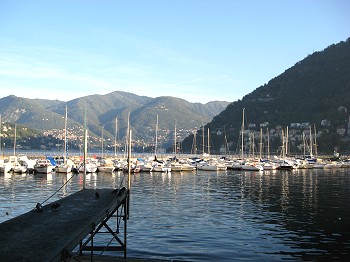
or by ship
| ANNE WANNER'S Textiles in History / cieta conference in Como, Italy - 2007 |
| 22 nd General Assembly of CIETA, Como, Italy
- 2007 Italian Textiles: crossed influences to and from Italy between the 11th and the 20th century. |
| From 1th to 4th
October 2007 BIBLIOTECA COMUNALE, COMO, ITALIA |
 Arriving in Como by train |
 or by ship |
 Views of squares and lanes in the ancient town of Como |
|
| The Conference: Lectures on Monday through Wednesday |
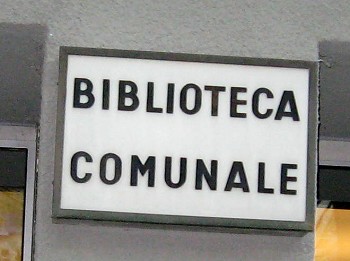 |
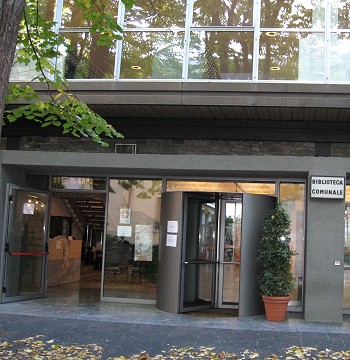 |
 |
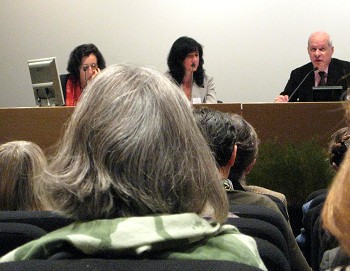 |
| Meetings in the entrance hall of the library | Opening speech of the
President Mr. Pierre Arizzoli-Clementel, and: Mrs Agnes Colas and Mrs Marie Helene Guelton |
| L E C T U R E S on E M B R O I D E R Y |
| Sumru Belger Krody, USA |
| Holbein Gül and the Embroidery of the Ionian Islands |
| Summary: This paper will construct the history of a single motif, an interlaced strapwork medallion, and follow its route from Ottoman Turkey to Venice and finally to the Ionian Islands. Trough focusing on this motiv, this paper will try to construct a history of Venetian influences seen in Ionian Island embroidery and in turn, the Ottoman influences seen on Venetian embroidery. The hexagonal medallion made of interlaced strapwork is sometimes referred to as small-pattern Holbein gül in rug literature. Well-known as a main field design on Ottoman Turkish carpets of the 16th and 17th centuries, this medallion was introduced to the Ionian Islands' design vocabulary not through direct contacts with Ottoman Turks, but through Venetian who adapted this motiv very early in their artistic vocabulary. |
| Danièle Véron-Denise, France |
| From the Barberini to the Bourbons: the Franco-Italian itinerary of Nicolas de la Fage (?-1655), embroiderer to the king |
| Summary: In the extraordinary cultural hotbed constituted by Rome in the 17th century, numerous embroiderers appeared alongside other artists, such as painters and engravers. One of them, the Frenchman Nicolas de la Fage, became famous, as much in the Italian peninsula where he lived for over twenty years, as in the French court which he entered in the company of Nicolas Poussin in 1640 and was named embroiderer to the king. Some elements of the life and work of this embroiderer, who was also an engraver, enable light to be shed on the little-known situation of this category of artists within the dazzling Roman community and even beyond and to discover the wholly exceptional role played by engraving in this artist's oeuvre. |
| Ursula Karbacher, Switzerland |
| The influence of Italian Textiles on St. Gallen Embroidry of 11th - 20th centuries |
| Summary The mechanical embroidery manufactureres of St.Gallen were great textile collectors. These textiles, along with the embroidery samples, are to be found at the St.Gallen Textile Museum. The historical textiles, but afterwards the embroidered samples too, represented and still represent a major source of inspriation for designers of the St.Gallen textile industry. The lecture will demonstrate the influence of Italian textiles through the history of St.Gallen embroidery. |
| M A T E R I A L S: Threads for Embroidery |
| Chiara Buss, Italy -
and Antonietta Gallone, Italy |
| Special features of 16th century metal threads made in Milan |
| Summary: In a printed document - which can reasonably be dated to around 1750 - found in the Biblioteca Trivulziana (City Historical Archives), the unknown author states that Milanese battifoglia (sheet metal workers) were renowned "in the past" for their ability - said to be unique in Europe - to gild the metal sheet on one side only. He adds that lamellae and metal-wrapped threads made from such sheets were so well cut and thrown as to last longer than any other and to be still incomparable while he is writing. This information is confirmed by Diderot who writes in the Encyclopédie that neither Paris nor Lyon sheet metal workers have yet been able to reproduce such "or de Milan". A research project is now under way in which lamellae, filés and metal threads from dated Milanese 16th century woven silks and embroideries have been examined by means of chemical and physical analyses, as well as SEM electronic microscope photographic documentation. The result of such analyses will be the subject of the presentation, whose aim is to reveal the characteristics of Milanese metal threads in the hope of creating a map of the Lombard silks and embroideries still existing. |
| V O C A B U L A R Y - P R O J E C T |
| Anne Wanner-JeanRichard, Switzerland |
| The construction of a Vocabulary of Embroidery Stitches |
| Summary: The construction of a vocabulary of embroidery stitches will be presented and hopefully also discussed. Last year's meetings with colleagues showed that there seemed to be a need for a basic classification of the main embroidery stitches. In this paper, I will present a proposed structure and an alphabetical list of embroidery names which will identify individual stitches. There are designs of the stitches on both front and reverse sides as well as close-ups of embroideries. Special articles concerning regional embroidery will also be added. The project presented here starts with texts in German. Some French and English translations are included as well. It is important, however, that specialised collegues are willing to help with additions in their own languages. |
| V I S I T S in C O M O, in the evenings, after the lectures |
| MuST: Museo Studio
del Tessuto at the Fondazione Antonio Ratti |
The MuSt possesses several collections of ancient textiles of European, Asiatic and South American origin. Each day from Monday, Oct. 1st to Thursday, Oct. 4th, the museum staff will be available - on appointment only - from 10 am to 5 pm to show any part of the collection that members of CIETA will choose to see, after making a choice from the Multimedia Catalogue. |
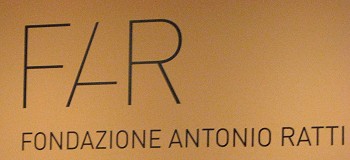 Every evening at 5.30 pm the Ratti Foundation showed its catalogue, parts of the collection (Cashmere Shawls) and sampler books. It was also possible to see the current exhibiton on the designer Carla Badiali. |
 |
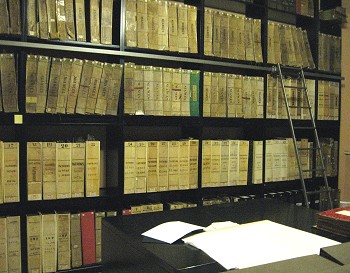 |
 |
| Other visits during
the Conference in Como: - Duomo: the Cathedral treasury includes very important textiles from the 16th and early 17th century. - Museo Archeologico Paolo Giovio: A collection of archaeological finds, from roman to medieval times, and a display of historical items illustrating local history. - Museo Didattico della Seta: The museum has a very rich and diversified collection of 19th and early 20th century machinery involved in the processes of dying, weaving, printing and finishing silk textiles. |
- Pinacoteca Civica: In Palazzo Volpi are shown the Medieval and Renaissance works collected by Como families. Of particular interest the floor dedicated to the Como Abstract School. - XVII Mini Art Textile Show: The international show of contemporary textile art in its 17th edition will inaugurate the 2007 exhibition on Saturday, September 29th, and this year will occupy several locations throughout the city. |
| Official Dinner of
the 22nd meeting of CIETA at Sala Bianca del Teatro Sociale, Como, Italy |
 |
 |
| Thursday - V I S I T - No 3: Milanese textile production in the 15th and 16th century |
| A day of visits in
Milan: - Museo Poldi Pezzoli: Three altar-fronts made in the 1490s for the Ludovico Sforza's court had never been examined until recently when they have been dismounted from the wooden frame in order to be cleaned. |
In the Textile Room will be shown two tapestries from the Francesco Spiering's workshop (1602). Also the Museum has on display a cope's hood embroidered on drawings by Botticelli and a rather important small collection of bobbin and needle lace. |
 |
 |
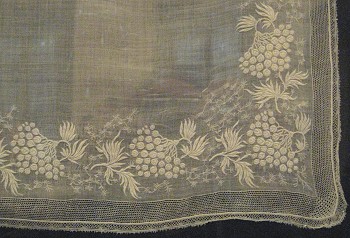 |
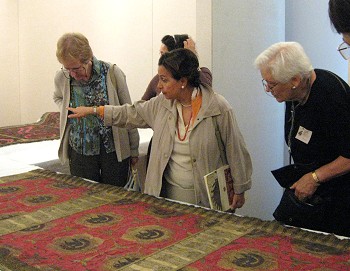 |
| - Sagrestia
Capitolare, Duomo: Milanese 16th century embroidery school in the Cathedral Treasury: work in silk satin stitch by Ludovica Pellegrini and Margherita Bazza, and metal embroideries by Pompeo Berluscone ordered by the Archbishop for the canonization of Charles Borromeo in 1610. |
The Treasury also includes 15th to 19th century vestments, and very interesting Cantu lace borders of the early 20th century. |
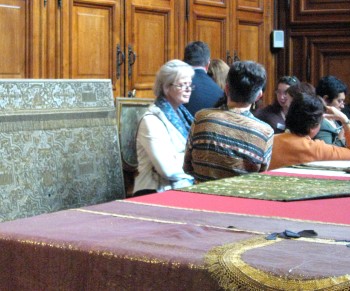 |
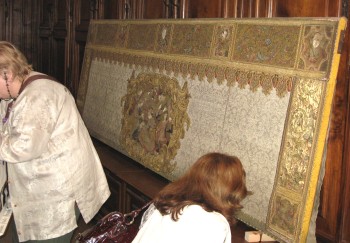 |
| - Basilica di S.
Ambrogio: The most important Romanesque basilica in Italy, S. Ambrogio houses a collection of medieval liturgical vestments - complete or in large fragments - found in the two subsequent burials of St. Ambrose, ranging from the 7th to the 12th century. |
For the occasion CIETA members will be allowed to enter the "Matroneo" (women's gallery) of the basilica, where the objects are now kept. |
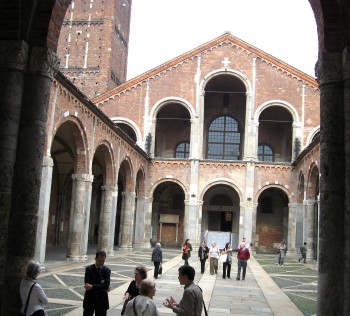 |
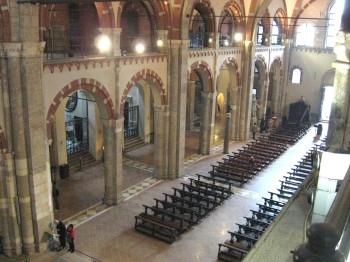 |
 |
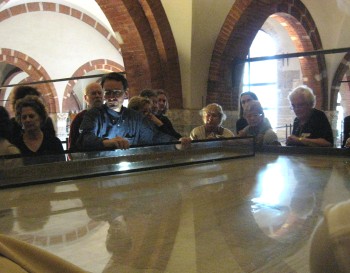 |
| - Museo delle
Scienza e della Tecnica: Semi-mechanised loom for weaving cloth, reconstructed according to Leonardo da Vinci's drawing. |
A demonstration of the loom
will be made on the occasion of the visit with a
commentary by the author of the reconstruction, M. Flavio
Crippa. |
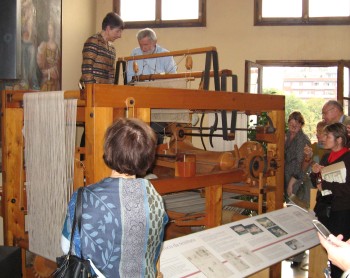 |
 |
| - Castello
Sforzesco: For the occasion, CIETA members will be taken in the storage space in order to examine some 14th century |
Milanese embroideries that
were recently found, and will be abel to discuss them
with the two scholars who are studying them. |
 |
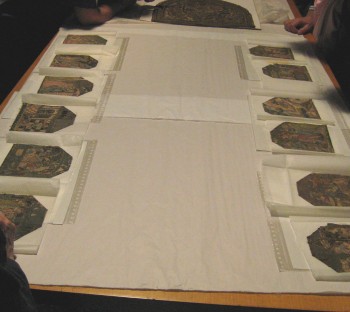 |
| home | Last revised October 9, 2007 |